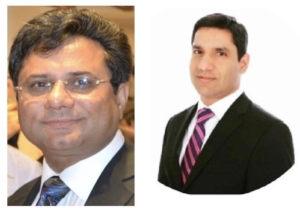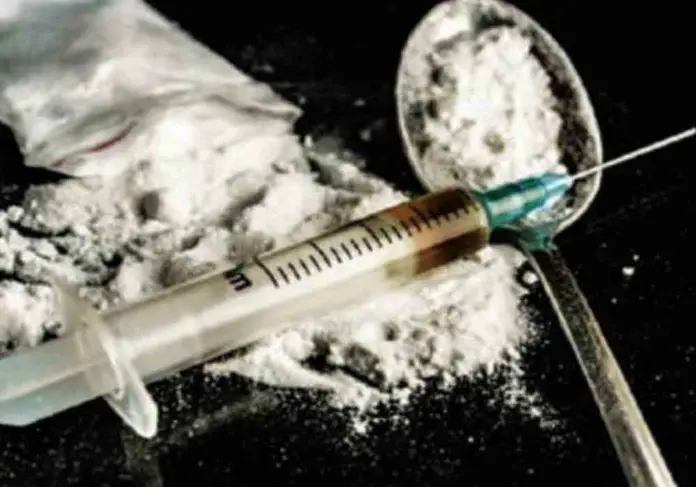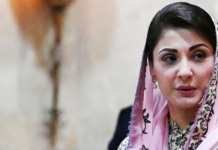Dr. Ikramul Haq and Abdul Rauf Shakoori

Today, June 26, 2022, marks International Day against drug abuse and illicit trafficking as decided by the United Nations General Assembly in 1987 to raise the level of awareness in the international community about the dangers of drug abuse, to prevent its spread and to encourage all efforts to combat the menace at the international level.
The illicit trafficking of drugs and their use has become a challenge for the entire global community. The United Nations General Assembly adopted resolutions 40/122 of December 13, 1985, 41/125, of December 4, 1986, 42/112, and 42/113 of December 7, 1987, and adopted the relevant resolutions of the Commission on Narcotic Drugs and the Economic and Social Council to implement the international campaign against drug abuse and illicit trafficking.
The United Nations (UN) through resolution 42/112 of December 7, 1987 decided to observe June 26 as the international day against the goal of an international society free of drug abuse. Every year, this day reminds the international community about the unanimous decision of creating awareness and fighting with the global challenge of drug abuse, illicit production, and trafficking in drugs and psychotropic substances. This year 26th June is being observed with the theme of “Addressing drug challenges in health and humanitarian crises”. The Community Anti-Drug Coalitions of America (CADCA) is calling it a theme of development, “Let’s Develop Our Lives, Our Communities, Our Identities…Without Drugs”.
Though the resolution 42/113 was adopted to undertake an international campaign against drug abuse and illicit trafficking so that the nations could reiterate their condemnation of international drug trafficking as a criminal activity, it also urged them to take appropriate action, and acknowledge the importance of the issue that nations despite their financial constraints would not stop their efforts against abuse of drugs and their trafficking.
However, despite serious efforts, it appears that the global community still needs coordinated efforts to curtail the use of drugs and their illicit trafficking. The UN Office of Drug and Crime (UNODC) in its report on Policy Implication published in 2021 highlighted that the volume of sales of drugs on the Dark Web alone reached US$315 million in just two and a half years from mid-2017 to 2022—earlier it recorded around US$80 million from 2011 to 2017. The report further highlights that 66 million people between the ages of 15-64, who use drugs, belong to North America, 80 million in Asia, 60 million in Africa, 42 million in Europe, and 17 million in Latin America, and the Caribbean. Roughly 200 million people used cannabis in 2019 representing 4% of the global population. The figure is highest in North America (14.5%) and lowest in Asia (2%).
The number of cannabis users has increased by nearly 18% over the past decade. It is further highlighted that around 62 million people used opioids for non-medical purposes in 2019, corresponding to 1.2% of the global population.
The same report highlighted that the output of global cocaine manufacture doubled between 2014 to 2019 to reach an estimated 1,784 tones (expressed at 100% purity), which is tantamount to the highest level in history. In 2019, the global quantity of seized cocaine increased by 9.6% compared to the preceding year to reach 1,436 tons (of varying purities), a record high. The 90% increase in the quantities seized between 2009 and 2019 is more likely a reflection of a combination of factors, including an increase in cocaine manufacture (50% between 2009 and 2019) and a subsequent increase in both, cocaine trafficking, as well as in the efficiency of law enforcement, which may have contributed to the overall interception rate.
Among the fifteen countries reporting the largest quantities of cocaine seized in 2019, ten were in the Americas, four in Western and Central Europe, and one in Asia. The bulk of cocaine seized worldwide continues to be in the Americas, which accounted for total quantity of cocaine seized. In South America alone it witnessed a 5% enhancement between 2018 and 2019, to a record 755 tons, with most countries in the subregion, including Bolivia, Brazil, Colombia, and Peru, reporting increases.
Drug markets on the darknet only emerged a decade or so ago, but the main ones are now worth at least US$315 million in annual sales. Although this is a tiny fraction of overall drug sales, the trend is upward, with a four-fold increase in annual sales between the beginning of 2010s (2011–mid-2017) and the more recent years (mid-2017–2020). The expansion of online drug markets to social media and popular e-commerce platforms further suggests that their accessibility is widening. The number of drug users in Africa is projected to rise in the next decade by as much as 40% simply because of demographic changes because of which globally, the number of people using drugs is projected to rise by 11% by 2030.
Low-income countries account for the lion’s share of this rise. In a survey of health professionals in 77 countries, a rise in the non-medical use of sedatives was reported in 64% of countries and consumption of cannabis was reported to have increased by 42%. Afghanistan reported a 37% increase in the amount of land used for illicit cultivation of opium poppy during 2020 compared with the previous year. It was the third-highest figure ever recorded in the country and accounted for 85% of the global total opium production in 2020. The increase follows a trend that has seen the global area under opium poppy cultivation rise over the past two decades, particularly after 2009.
Roughly 275 million people worldwide have used drugs in the past year, up from 226 million in 2010. This 22% increase was partly due to a 10% rise in the global population. Health-care systems are facing an increasingly tough task, with estimates suggesting that about 36 million people were suffering from drug use disorders in 2019, up from an earlier estimate of 27 million in 2010. This represents a rise from 0.6% to 0.7% of the global population.
Almost 50,000 people died from overdoses attributed to opioids in the United States in 2019, more than double the 2010 figure. By comparison, in the European Union, the figure for all drug-related overdoses (mostly relating to opioid use) stood at 8,300 in 2018, despite a larger population. There were more than 11 million people injecting drugs in 2019, of whom 1.4 million are living with HIV and 5.6 million with Hepatitis C. Almost 1.2 million people live with both. Their primary risk of disease comes from sharing contaminated injecting equipment.
Similarly, UNODC in its report published in 2013 titled “Drug use in Pakistan” stated that 4.25 million people are relying on substances and required treatment. The report further highlighted that cannabis is commonly used in Pakistan and around 4 million people are engaged nationwide. Whereas around 860,000 people are heroin addicts, 19,000 are methamphetamine users, and around 1.6 million are engaged in misuse of prescription opioids (painkillers) for non-medical use.
The statistics show that drug abuse and illicit trafficking not only impact health of the people, but it is polluting the global financial system. A comprehensive report on the volume of illicit flow of funds prepared by the UNODC in 2009 states that annual money laundering is around 2-5% of the global GDP (roughly $800 billion to $2 trillion in US dollars). However, around 20% of this amount came from the sale of drugs. The same report further highlighted that the profits from the sale of cocaine in 2009 were recorded as $84 billion which includes $35 billion generated from North America and whereas $26 billion came from the west and central Europe.
Money generated through illicit tracking is used as a source of terrorist financing. The UNODC report states that cocaine valuing $1.25 billion was transferred through West Africa to Europe with the possibility of the drug trade by the Al-Qaida in the Islamic Maghreb (AQIM). Similarly, the European Commission in 2016 linked Al-Shabaab with heroin trafficking, transporting it from ports in areas it controls to Europe, and also cocaine trafficking into Kenya (Source: https://www.unodc.org/e4j/en/organized-crime/module-16/key-issues/terrorism-and-drug-trafficking.html).
Despite its severe implications, the global community has increased responsibility to focus on fighting this crime. Pakistan is a neighbour of Afghanistan which is considered the riskiest place related to the drug trade and its abuse needs to be dealt with proactively. The Financial Action Task Force report on Financial Flows Linked to the Production and Trafficking of Afghan Opiates states that the annual value of the global opiate market was estimated at US $68 billion and out of which US $60 billion was from Afghanistan.
Since Pakistan is working with FATF to address its concerns concerning strategic deficiencies in its Anti-Money Laundering and Combating Financing of Terrorism regime, we need to improve our national risk assessment factors that should include drug trafficking as a major problem. The Asia Pacific Group (APG) Team in their Mutual Evaluation Report on Pakistan published in 2019 raised their concerns on our first national risk assessment on Money Laundering and Terrorist Financing completed in 2017. The APG team especially highlighted that Pakistan’s geography and porous borders increase its vulnerability to smuggling and narcotics trafficking.
Pakistan needs to address concerns raised in the mutual evaluation report regarding understanding of the competent authorities about money laundering and terrorist financing so that they could detect illicit financial flows linked to Afghanistan, cooperate with the international community to secure international borders from drug trafficking and establish controls to prevent financial institutions from being penetrated by proceeds earned through drug trafficking.
Pakistan’s financial institutions need to improve their reporting regime so that they could identify, detect, and report all those transactions potentially linked to drug trafficking. In some parts of Pakistan, the hawala system is still active. We must increase checks and balances and establish strong controls on the Money or Value Transfer Service (MVTS) to curtail their role in facilitating illicit flow of funds. The objective of celebrating the day against drug abuse and illicit trafficking cannot be achieved without planned and coordinated efforts.
Dr. Ikramul Haq, Advocate Supreme Court, specialises in constitutional, corporate, media, ML/CFT related laws, IT, intellectual property, arbitration and international tax laws. He is country editor and correspondent of International Bureau of Fiscal Documentation (IBFD) and member of International Fiscal Association (IFA). He is Visiting Faculty at Lahore University of Management Sciences (LUMS) and member Advisory Board and Visiting Senior Fellow of Pakistan Institute of Development Economics (PIDE).
Abdul Rauf Shakoori, Advocate High Court, is a subject-matter expert on AML-CFT, Compliance, Cyber Crime and Risk Management. He has been providing AML-CFT advisory and training services to financial institutions (banks, DNFBPs, Investment companies, Money Service Businesses, insurance companies and securities), government institutions including law enforcement agencies located in North America (USA & CANADA), Middle East and Pakistan. His areas of expertise include legal, strategic planning, cross border transactions including but not limited to joint ventures (JVs), mergers & acquisitions (M&A), takeovers, privatizations, overseas expansions, USA Patriot Act, Banking Secrecy Act, Office of Foreign Assets Control (OFAC).







